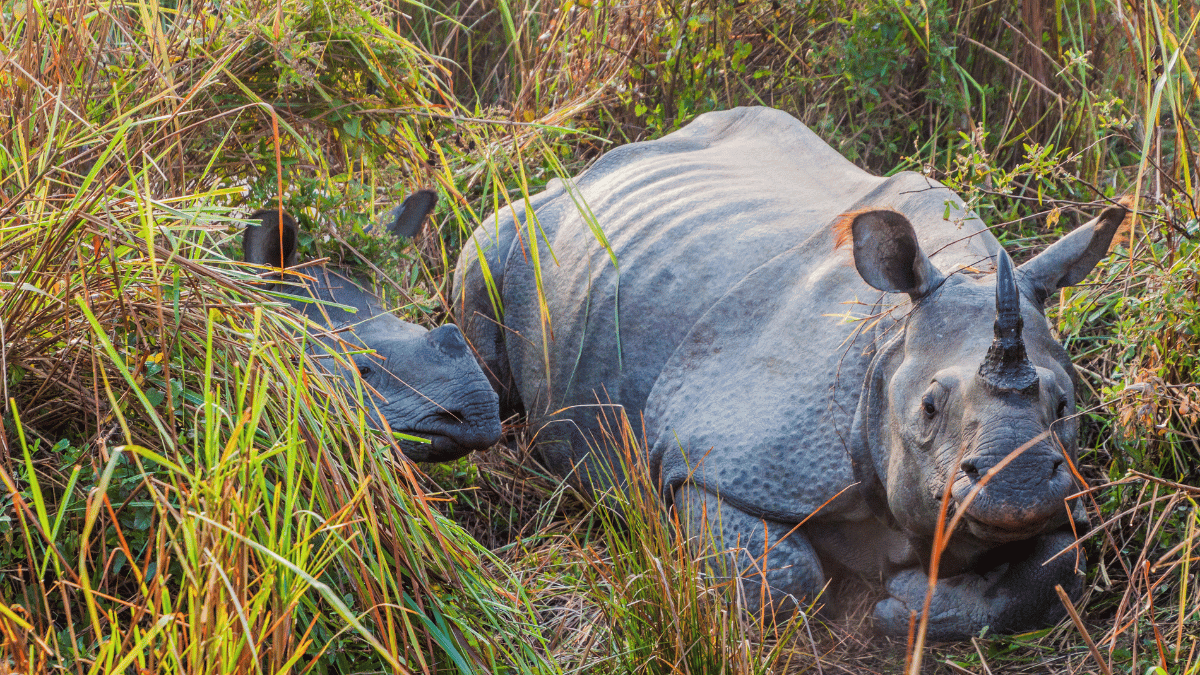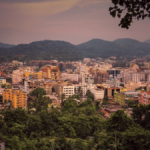Discovering the Enchantment of Kaziranga National Park
Nestled amidst the verdant landscapes of Assam, India, lies the magnificent Kaziranga National Park, an enclave cherished by wildlife aficionados and nature enthusiasts alike.
The Geographical Marvel of Kaziranga National Park:
Spanning the sprawling floodplains of the Brahmaputra River, this UNESCO World Heritage Site is revered for its unparalleled biodiversity and dedicated conservation endeavors.
Location and Expansion:
Situated within the Kaliabor and Bokakhat subdivisions, spanning Nagaon and Golaghat districts of Assam, India, Kaziranga National Park covers an area of 378.22 square kilometers. The relentless erosion by the Brahmaputra River has led to the loss of 51.14 square kilometers of land within the park.
Proposals to extend the park’s boundaries by an additional 429 square kilometers (166 square miles) aim to provide more habitat for the burgeoning wildlife population and serve as a safe corridor for animals towards the Karbi Anglong Hills.
Established as the Kaziranga Proposed Reserve Forest on June 1, 1905, spanning 232 square kilometers, it gained National Park status in 1974 with the implementation of the Assam National Park Act of 1968. Notably, authorities declared Kaziranga a Tiger Reserve in 2006 due to the growing tiger population
Recently, PM Narendra Modi visited Kaziranga National Park

Exploring Kaziranga: Assam’s Wilderness Gem
With its opulent natural wealth and deep cultural significance, Kaziranga National Park, often dubbed as the “Serengeti of the East,” stands as a testament to India’s commitment to preserving its fauna and flora for posterity. Let’s delve into the marvels of Kaziranga and unravel its significance not only to Assam but beyond.
Biodiversity at Kaziranga National Park
Encompassing approximately 430 square kilometers, Kaziranga boasts a staggering variety of wildlife species. The park is renowned for hosting one of the largest populations of the Indian one-horned rhinoceros globally, a majestic species freely roaming the grasslands and marshlands.
Besides the iconic rhinoceros, Kaziranga is also home to Asian elephants, wild water buffalo, and swamp deer, all integral to the park’s intricate ecosystem. Bird enthusiasts are treated to over 500 species of birds, including migratory varieties like the bar-headed goose and greater adjutant stork gracing the skies.
In addition to its prominent inhabitants, Kaziranga shelters a myriad of smaller mammals, reptiles, and amphibians, adding to its ecological richness. With over 1,500 species of plants, including towering trees like the silk cotton tree and Indian rosewood, the park provides sustenance and shelter for its diverse fauna.
Tourism and Conservation:
Exploring Kaziranga offers a unique adventure, with visitors enjoying thrilling jeep safaris or elephant rides through the grasslands, offering unparalleled wildlife encounters. The park’s extensive network of trails and watchtowers, accompanied by expert guides, further enhances the wildlife viewing experience.
As a prominent tourist destination, Kaziranga significantly contributes to Assam’s tourism sector, fostering economic growth and cultural exchanges within the region.
Challenges and Conservation Initiatives:
Preserving biodiversity remains central to Kaziranga National Park’s mission. A dedicated team of rangers and conservationists tirelessly works to safeguard the park’s invaluable biodiversity against poaching, habitat degradation, and other threats.
Despite being a UNESCO World Heritage Site, Kaziranga faces challenges such as habitat fragmentation, human-wildlife conflicts, and the impacts of climate change. Illegal logging and encroachment pose threats to the park’s integrity, while conflicts between locals and wildlife require mitigation efforts.
Cultural Significance:
Beyond its biological richness, Kaziranga holds immense cultural significance for the people of Assam. The park’s stunning vistas have inspired countless myths, stories, and folklores, underscoring the deep connection between indigenous communities and their natural surroundings.
Time-honored traditions like rhino conservation rituals and community-led ecotourism ventures underscore Kaziranga’s significance within Assamese culture.






